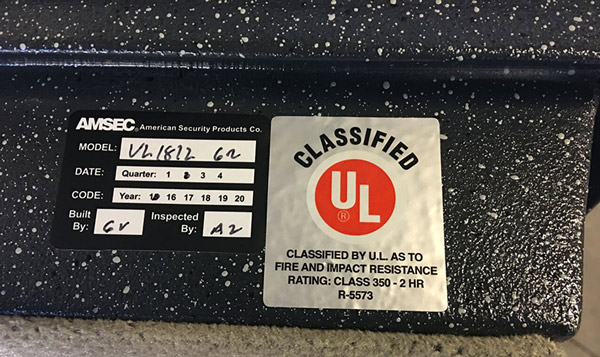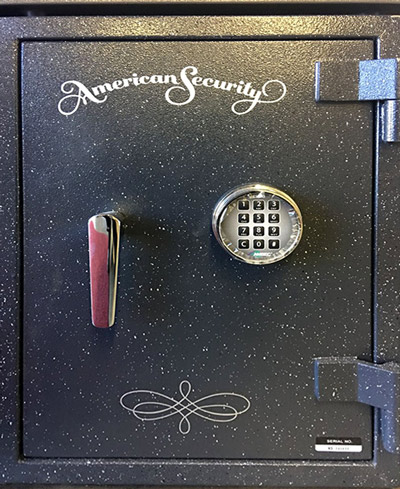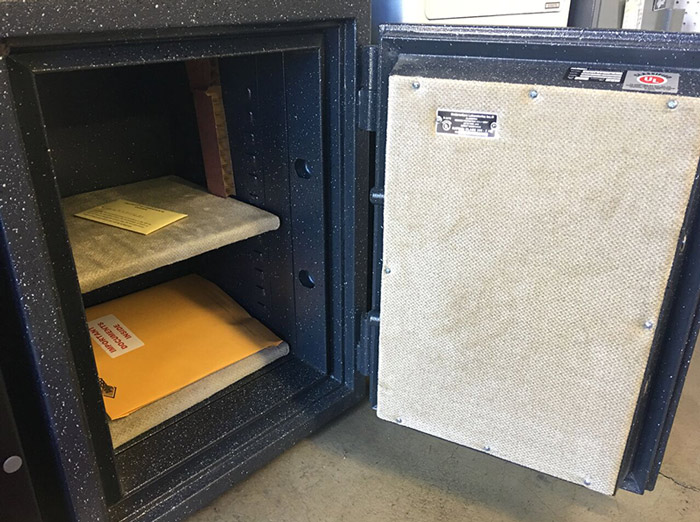No such thing as fireproof
Did you know that nothing is fireproof? Given the correct environment (time, temperature, and fuel) anything can burn. Did you know that nothing is burglary proof? Given the correct environment (time, tools, and knowledge), a burglar can penetrate any container. Did you know, despite this information that you can still protect your belongings? Finding the right level of security can be a daunting task and is often different from one person to the next. Some people are more concerned with fire protection while others are more concerned with burglary protection. Some people are very concerned with how much money is required to achieve the level of protection they require. Fortunately, there are many different types of safes and many different manufacturers.
Selecting a safe for your home
Not all safes are created equal. Aside from the manufacturer’s name, the safe purchaser has to consider what level of protection is best for their application. Do you need fire protection? Is thirty minutes of fire protection enough, or do you need all the way up to two hours of fire protection? Do you need a simple strong box with little burglary protection or do you need something with an increased burglary rate designed to thwart even the most determined criminal?
Fire-rating of safes
 Fire-rated safes come in three standard formats, 30 minutes of fire protection, 60 minutes of fire protection, and 120 minutes of fire protection. These are the common ratings by UL Inc., an independent testing company that verifies protection from fire using a battery of tests. UL Inc. also employs a battery of tests to determine its burglary ratings. UL Inc., uses seven different classifications for its burglary rated safes. UL Inc. is not the only independent testing agency, but they set the standard for both domestic and imported safes. Being familiar with UL Inc. ratings will help shoppers determine which safe is best for them.
Fire-rated safes come in three standard formats, 30 minutes of fire protection, 60 minutes of fire protection, and 120 minutes of fire protection. These are the common ratings by UL Inc., an independent testing company that verifies protection from fire using a battery of tests. UL Inc. also employs a battery of tests to determine its burglary ratings. UL Inc., uses seven different classifications for its burglary rated safes. UL Inc. is not the only independent testing agency, but they set the standard for both domestic and imported safes. Being familiar with UL Inc. ratings will help shoppers determine which safe is best for them.
Strong Box
If we set ratings aside and talk solely about safe descriptions, we should start with strong boxes. Strong boxes are the simplest of security containers. Strong boxes have a standard burglary protection rate but have no fire protection. Strong boxes are perfect for the dollars conscious thinker. Strong boxes are ideal for college students, people in small apartments with limited space, people that need to secure medicine, or anyone with small valuables that do not need increased burglary protection and are not concerned with fire protection. Strong boxes are available with digital keypads, dial combinations, or even mechanical key entry.
Burglary Rated Safes
If you are looking for something that is more robust than a simple strongbox you can look into an increased burglary rated safe. Burglary rated safes earn their rating based upon the materials that are used to make the safe more secure. An increased security safe uses plate steel in the door to make drilling attacks harder for the would be criminal. The more steel used the higher the burglary rate. “B” rated safes use steel doors less than 1″ thick and steel body less than 1/2″ thick. Whereas a “C” rated safe uses steel doors at least 1″ thick and steel body at least 1/2″ thick. For even more secure safes you can get something that is time rated. Time ratings are given to safes that have proven to be impervious to attack under a specified time. This test allows a knowledgeable, skilled, technician the use of any tool and a specified time to gain entry. If they are not successful under those steps, the safe earns a specified time rate. Common time rates are TL15, TL30, and TL30X6. TL30X6 uses more steel than any other safe and uses it on all six walls.
Jewelry and Gun Safes
 Aside from burglary and fire rated safes, there are specialty safes designed for a specific purpose. There are jewelry safes that have wooden drawer inserts lined with plush materials to display jewelry, watches or other baubles. There are small compact pistol safes perfect for one gun and some ammunition. There are larger long barrel gun safes designed to house a number of long barrel guns, ammunition, and still have room for small electronics, paperwork and heirlooms. There are safes that are designed to go below the surface of the floor. There are safes that are designed to be mounted under your bed. There are safes specific to be recessed into a wall. There are even safes designed specifically for protecting electronic data which uses an entirely different set of standards for media security.
Aside from burglary and fire rated safes, there are specialty safes designed for a specific purpose. There are jewelry safes that have wooden drawer inserts lined with plush materials to display jewelry, watches or other baubles. There are small compact pistol safes perfect for one gun and some ammunition. There are larger long barrel gun safes designed to house a number of long barrel guns, ammunition, and still have room for small electronics, paperwork and heirlooms. There are safes that are designed to go below the surface of the floor. There are safes that are designed to be mounted under your bed. There are safes specific to be recessed into a wall. There are even safes designed specifically for protecting electronic data which uses an entirely different set of standards for media security.
Selecting a Safe
As you can see, there are many types of safes. There are different sizes, fire ratings, burglary ratings, jewelry safes, gun safes, wall safes, floor safes, media safes, large safes, small safes, safes with keypad entry, safes with dial combination entry, safes that can be opened with a mechanical key and safes that are designed to be embedded in concrete in the foundation of your house. There a multitude of options and it’s best to get the advice of an expert before you make a decision. Large department or “big box” stores rarely carry a complete selection and few staff are well-versed in safes. Locksmith and security specialists have the most experience recommending, installing and repairing safes.

